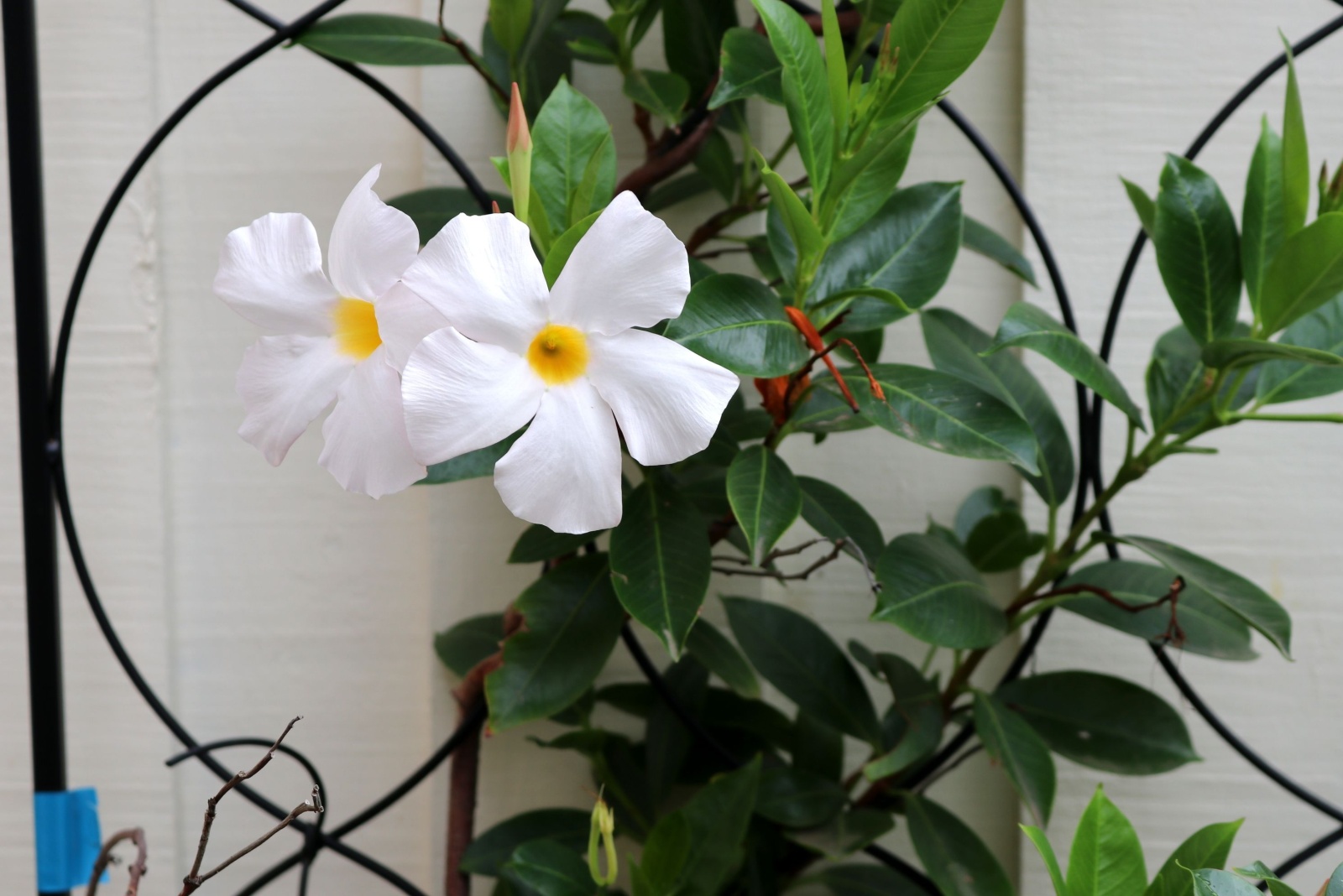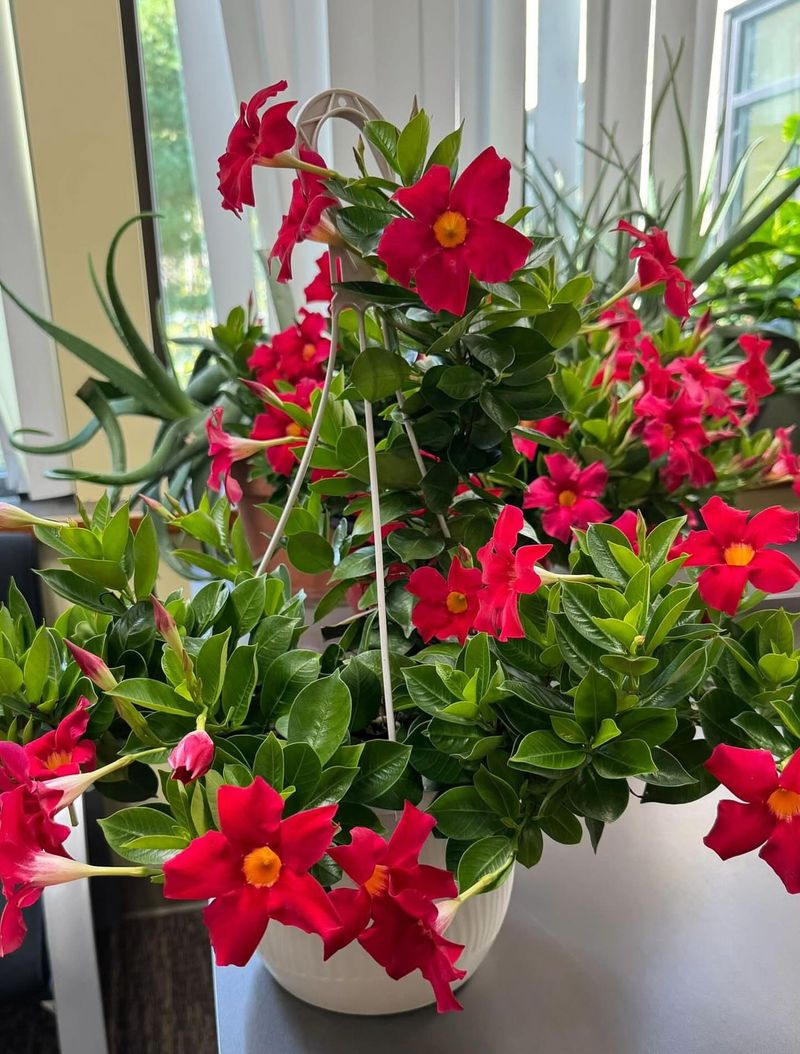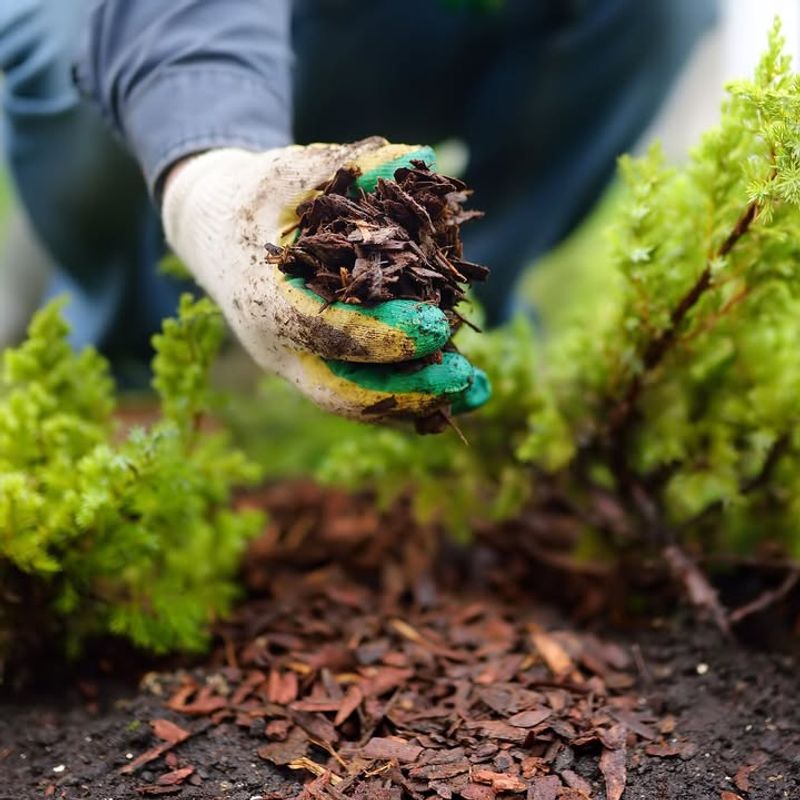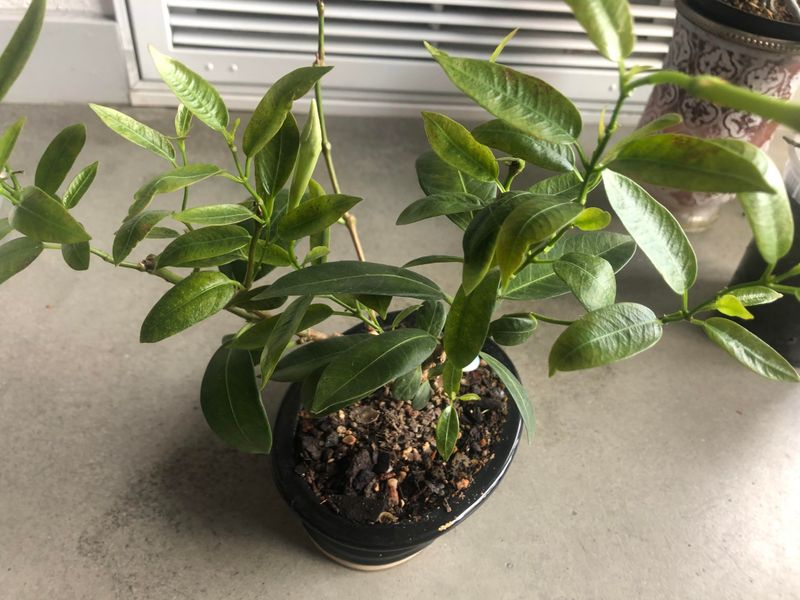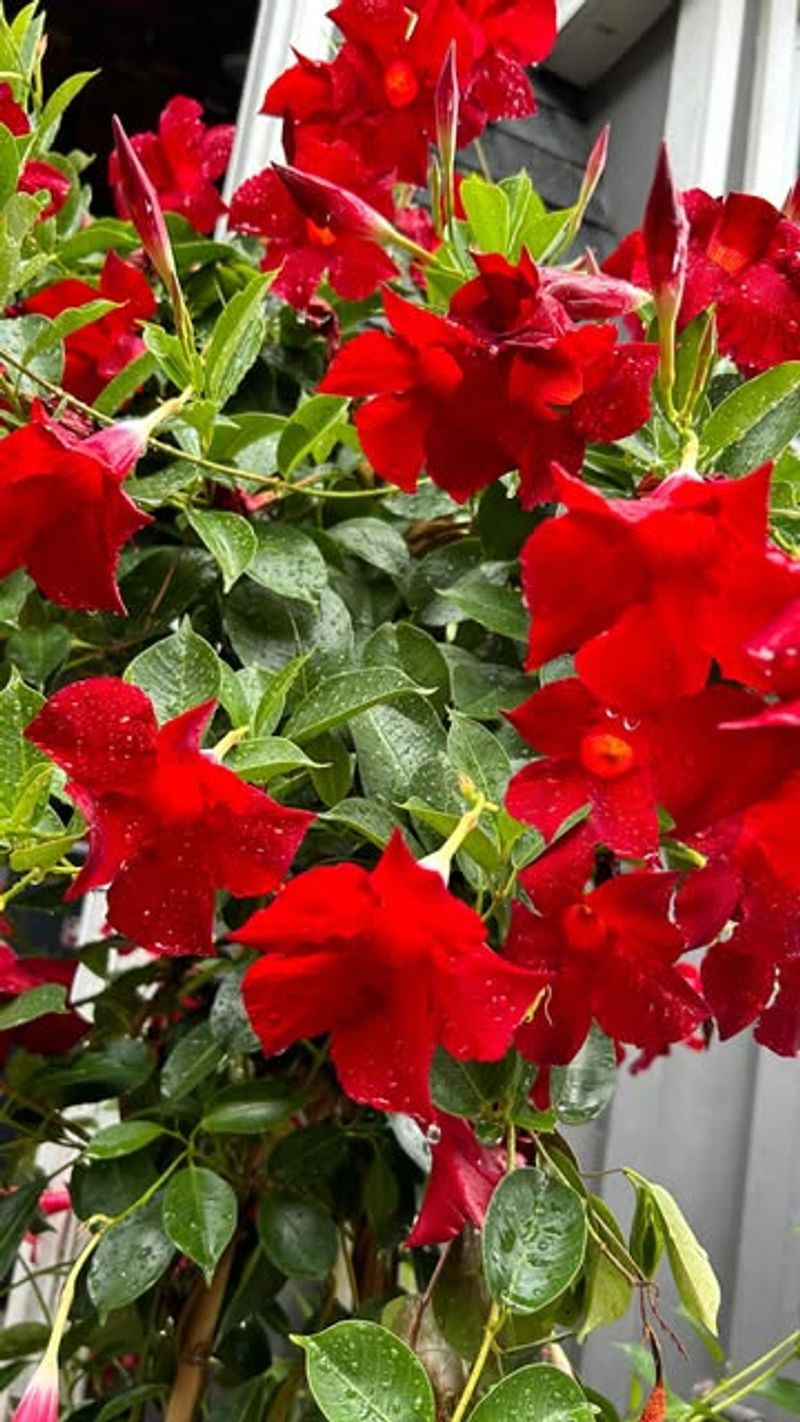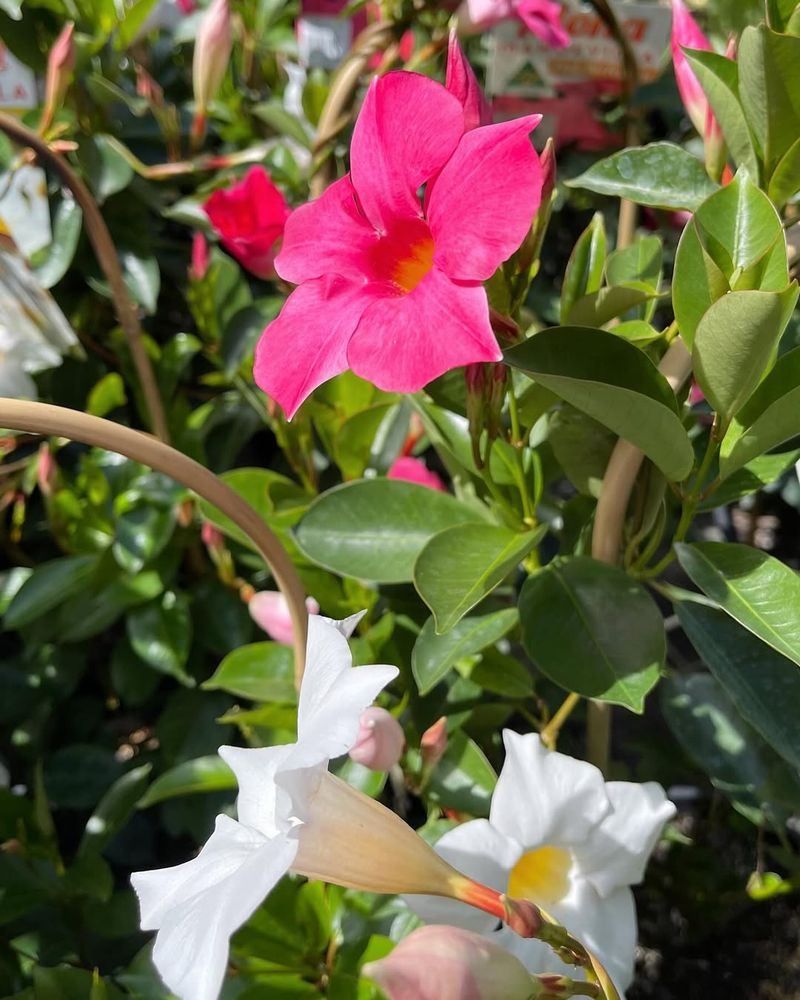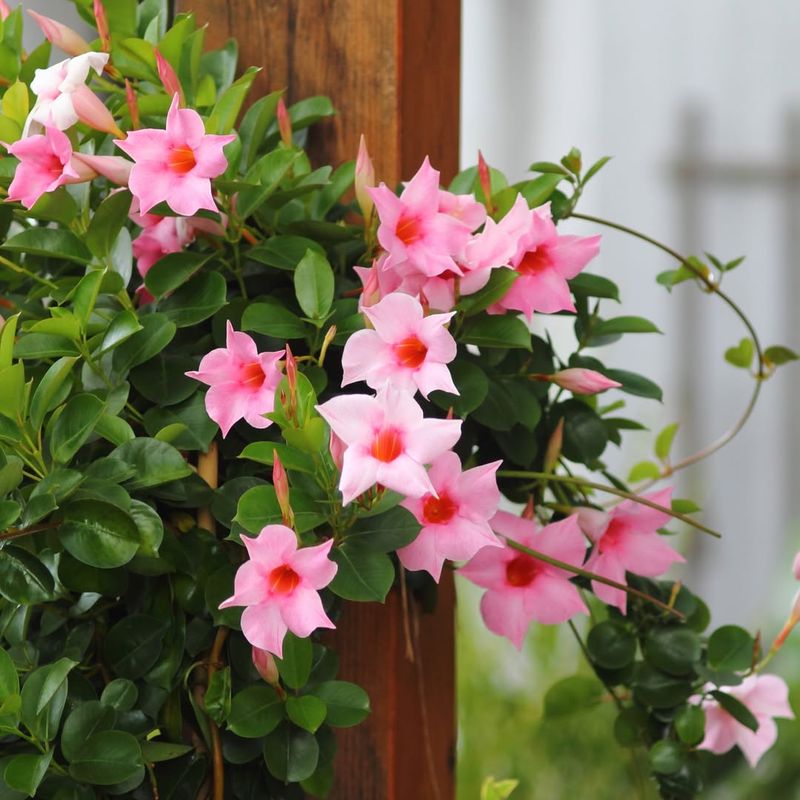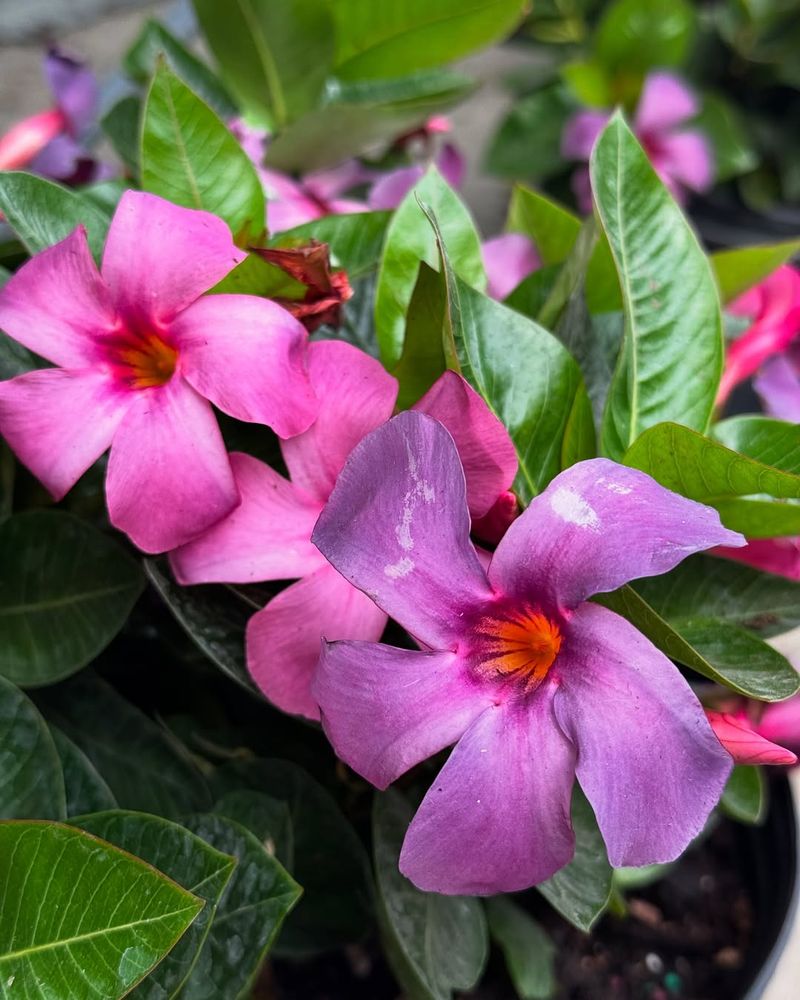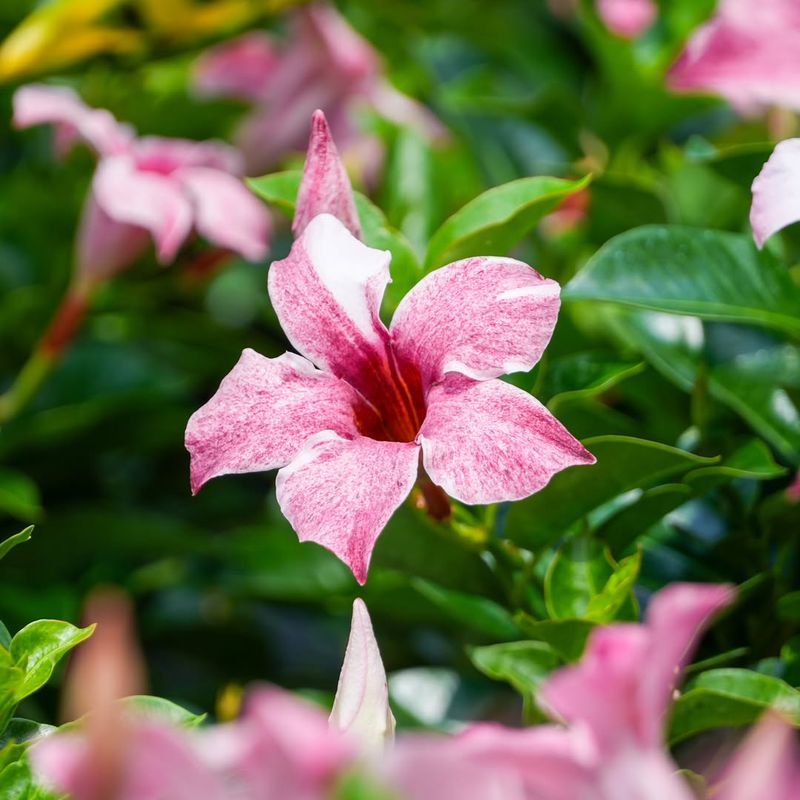Mandevilla vines bring stunning tropical blooms to Florida gardens, but even in the Sunshine State, winter can be tricky for these heat-loving plants. While Florida winters are mild compared to most places, cooler temperatures and occasional cold snaps can still stress your mandevilla.
Keeping your vine thriving through the chillier months doesn’t have to be complicated, and with a few simple steps, you’ll enjoy beautiful flowers come spring.
1. Move Potted Plants To Sheltered Spots
Container-grown mandevillas can be relocated easily when temperatures drop below 50 degrees. Placing them under eaves, on covered porches, or near south-facing walls provides extra warmth and wind protection.
Buildings radiate stored heat during cool nights, creating a microclimate that shields tender foliage. Even moving plants just a few feet closer to your house makes a noticeable difference in their comfort level.
Remember to still provide adequate sunlight during the day for healthy growth.
2. Apply Mulch Around The Base
A thick layer of organic mulch acts like a cozy blanket for mandevilla roots. Spread two to three inches of wood chips, pine bark, or shredded leaves around the plant’s base, keeping it a few inches away from the stem.
Mulch regulates soil temperature fluctuations and retains moisture, both crucial during unpredictable winter weather. As it breaks down, it also enriches the soil with valuable nutrients your plant will appreciate.
Refresh mulch annually for best results and appearance.
3. Reduce Watering Frequency
Winter means slower growth and reduced water needs for your mandevilla. Overwatering during cooler months invites root rot and fungal problems that can devastate your plant.
Check soil moisture by sticking your finger two inches deep before watering. If it feels damp, wait a few more days. Mandevillas prefer slightly dry conditions during their semi-dormant winter phase compared to their thirsty summer habits.
Adjust your schedule based on rainfall and temperature patterns throughout the season.
4. Stop Fertilizing Until Spring
Fertilizer encourages new growth, which sounds great until you realize tender new shoots are extremely vulnerable to cold damage. Your mandevilla naturally slows down in winter and doesn’t need extra nutrients.
Pushing growth with fertilizer during this rest period weakens the plant and wastes your money. Save your fertilizer budget for March or April when warmer weather returns and active growth resumes.
Patience now means stronger, healthier blooms later in the growing season.
5. Cover Plants During Cold Snaps
When forecasts predict temperatures dipping into the 40s or below, grab some frost cloth or old bedsheets. Drape the fabric completely over your mandevilla before sunset, allowing it to trap warm air rising from the ground.
Remove covers the next morning once temperatures rise above 50 degrees to prevent overheating. Plastic should be avoided as it doesn’t breathe and can cause more harm than good.
Keep covers handy throughout winter for quick protection.
6. Prune Lightly For Shape Only
Major pruning stimulates vigorous new growth that cold weather will damage. Winter isn’t the time for dramatic haircuts on your mandevilla.
Light trimming to remove dead, damaged, or crossing branches is perfectly fine and actually helps the plant conserve energy. Use clean, sharp pruners and make cuts just above leaf nodes at a slight angle.
Save heavy pruning for late winter or early spring when danger of frost has passed and growth accelerates naturally.
7. Watch For Pest Problems
Spider mites and aphids love stressed plants, and winter conditions can weaken your mandevilla’s defenses. Inspect leaves regularly, especially undersides where pests hide and multiply.
Early detection means easier control with insecticidal soap or horticultural oil. Healthy plants resist pests better, so maintaining proper care throughout winter serves as your first line of defense.
Wash foliage occasionally with a gentle spray to discourage pest establishment and remove dust buildup.
8. Ensure Proper Drainage
Standing water around roots spells disaster during cooler weather when evaporation slows dramatically. Check that containers have adequate drainage holes and garden soil doesn’t collect puddles after rain.
Amend heavy clay soils with compost or sand to improve water flow. Elevate pots slightly using pot feet or bricks to prevent waterlogging from underneath.
Good drainage prevents root suffocation and fungal diseases that thrive in soggy, cold conditions during Florida’s winter rainy periods.

